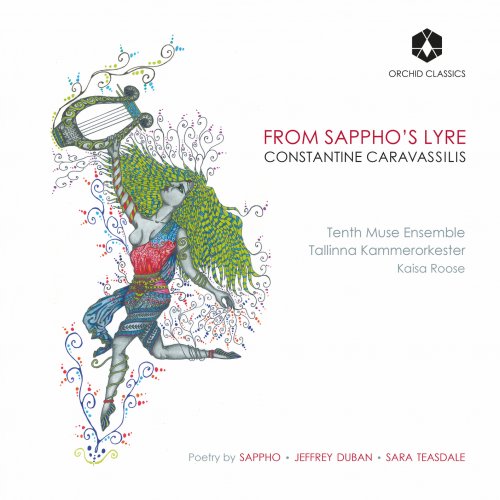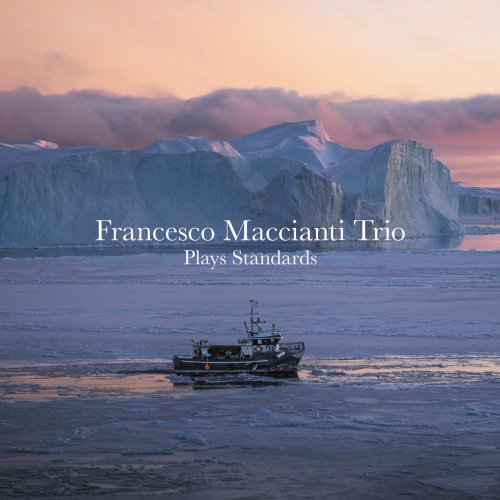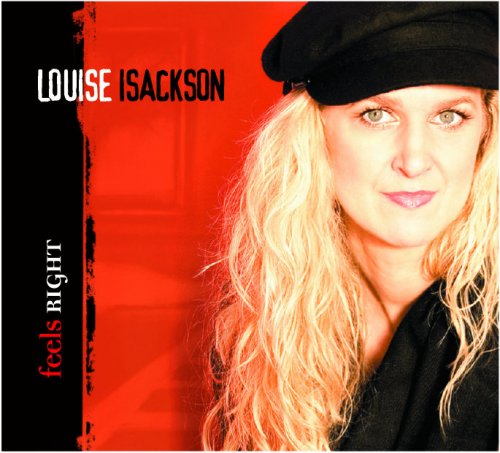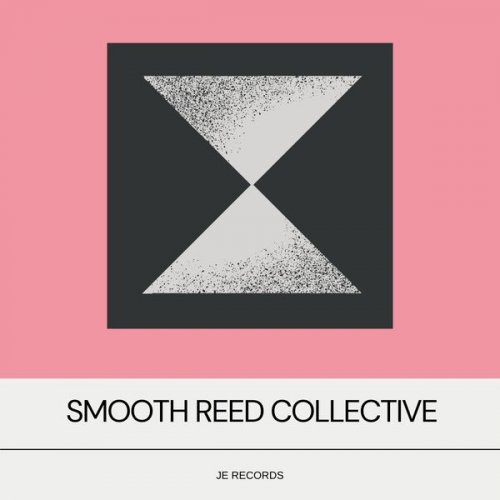Constantine Caravassilis, Tenth Muse Ensemble, Tallinna Kammerorkester, Kais Roose - FROM SAPPHO'S LYRE (2023) [Hi-Res]

Artist: Constantine Caravassilis, Tenth Muse Ensemble, Tallinna Kammerorkester, Kais Roose
Title: FROM SAPPHO'S LYRE
Year Of Release: 2023
Label: Orchid Classics
Genre: Classical
Quality: flac lossless (tracks) / flac 24bits - 96.0kHz
Total Time: 02:16:04
Total Size: 657 mb / 2.37 gb
WebSite: Album Preview
TracklistTitle: FROM SAPPHO'S LYRE
Year Of Release: 2023
Label: Orchid Classics
Genre: Classical
Quality: flac lossless (tracks) / flac 24bits - 96.0kHz
Total Time: 02:16:04
Total Size: 657 mb / 2.37 gb
WebSite: Album Preview
01. From Sappho's Lyre, Pt. 1 "Hymn to Aphrodite": No. 1, The Goddess Awakened
02. From Sappho's Lyre, Pt. 1 "Hymn to Aphrodite": No. 2, Earthward Summoned
03. From Sappho's Lyre, Pt. 1 "Hymn to Aphrodite": No. 3, Double Aria
04. From Sappho's Lyre, Pt. 1 "Hymn to Aphrodite": No. 4, Fantasy
05. From Sappho's Lyre, Pt. 1 "Hymn to Aphrodite": No. 5, Pas de deux
06. From Sappho's Lyre, Pt. 1 "Hymn to Aphrodite": No. 6, Incantation
07. From Sappho's Lyre, Pt. 1 "Hymn to Aphrodite": No. 7, Deathless Aphrodite
08. From Sappho's Lyre, Pt. 2 "Equal to the Gods (He Appears to Me)": No. 8, Invocation
09. From Sappho's Lyre, Pt. 2 "Equal to the Gods (He Appears to Me)": No. 9, Rapture
10. From Sappho's Lyre, Pt. 2 "Equal to the Gods (He Appears to Me)": No. 10, Seduction
11. From Sappho's Lyre, Pt. 2 "Equal to the Gods (He Appears to Me)": No. 11, Conveyance
12. From Sappho's Lyre, Pt. 2 "Equal to the Gods (He Appears to Me)": No. 12, Cosmic Canticle
13. From Sappho's Lyre, Pt. 2 "Equal to the Gods (He Appears to Me)": No. 13, Aegean Recitative
14. From Sappho's Lyre, Pt. 2 "Equal to the Gods (He Appears to Me)": No. 14, Zenith
15. From Sappho's Lyre, Pt. 2 "Equal to the Gods (He Appears to Me)": No. 15, Dream Within
16. From Sappho's Lyre, Pt. 2 "Equal to the Gods (He Appears to Me)": No. 16, Apotheosis
17. From Sappho's Lyre, Pt. 2 "Equal to the Gods (He Appears to Me)": No. 17, Exodos
18. 5 Duban Songs "Eros Sanctified" (Version for Voice & Orchestra): No. 1, The Gazing Gossamer
19. 5 Duban Songs "Eros Sanctified" (Version for Voice & Orchestra): No. 2, Explore Me
20. 5 Duban Songs "Eros Sanctified" (Version for Voice & Orchestra): No. 3, Doting Daphnis
21. 5 Duban Songs "Eros Sanctified" (Version for Voice & Orchestra): No. 4, Lalage
22. 5 Duban Songs "Eros Sanctified" (Version for Voice & Orchestra): No. 5, Communion
23. My Life a Lyric Cry (Version for Voice, Narrator, Oboe, Cello & Piano): No. 1, The Twilight's Inner Flame Grows Blue and Deep - No. 2, Twilight
24. My Life a Lyric Cry (Version for Voice, Narrator, Oboe, Cello & Piano): No. 3, Am I That Sappho Who Would Run at Dusk - No. 4, Cried to Love
25. My Life a Lyric Cry (Version for Voice, Narrator, Oboe, Cello & Piano): No. 5, Ah, Aphrodite, If I Sing No. More - No. 6, I Have Pierced the Pain
26. My Life a Lyric Cry (Version for Voice, Narrator, Oboe, Cello & Piano): No. 7, Ah, Never with a Throat That Aches with Song - No. 8, Beneath Thy Perfect Feet
27. My Life a Lyric Cry (Version for Voice, Narrator, Oboe, Cello & Piano): No. 9, in Many Guises Didst Thou Come to Me - No. 10, My Life a Lyric Cry
28. Sappho de Mytilène: No. 1, Mon chant
29. Sappho de Mytilène: No. 2, Toujours Eros
30. Sappho de Mytilène: No. 3, Vièrge
31. Sappho de Mytilène: No. 4, Adonis
32. Sappho de Mytilène: No. 5, Messager du printemps
From Sappho’s Lyre is a multimedia, scenic cantata for large chamber ensemble based on Sappho’s two major surviving poems: “The Hymn to Aphrodite” and “He Appears to Me (Equal to the Gods).”
Conceived as a stage work to be accompanied by dance and spectacle—and though it can be performed as a traditional vocal work with instrumental accompaniment—the composition’s overall formal/architectural design functions as a hybrid, one that lavishly fuses elements of ancient Greek play and theatre with Western ballet and opera.
Scored for two solo voices (soprano and mezzo), chamber orchestra, chamber choir, pre-recorded audio, and narrator, From Sappho’s Lyre is based on—and heavily inspired by—The Lesbian Lyre: Reclaiming Sappho for the 21st Century, a groundbreaking book by classicist Jeffrey M. Duban (Clairview Books, 2016). It uses the author’s translations to portray, interpret, and dramatize the charm and elegance of the originals so magnificently conveyed in the English language, while offering the listener a journey that orbits around ever evolving and shifting sonic and visual realms.
Antiquity’s Poetess and Ours (by Jeffrey M. Duban) sleeve note excerpt
Sappho’s Lesbos—well wooded, well cultivated, and well populated—lay within several hours of Sardis, the sophisticated capital of the wealthy kingdom of Lydia (in Asia Minor, modern Turkey). The island was active in seventh-century trade and colonization; it was torn by bouts of factionalism and political upheaval to which the aristocratic Sappho was sometimes prey, although her poetry reflects little of this. Indeed, as Aphrodite is Sappho’s special goddess and is herself apolitical among the contentious gods, so is Sappho’s poetry apolitical. The women of Lesbos were famed for their beauty no less than for their sophistication. Beauty contests were a yearly event.
Ancient criticism of Sappho finds its consensus in her poetic supremacy. In epigrams from the Palatine Anthology she is regularly counted as the tenth of the Muses: “Memory [mother of the Muses] herself was astonished when she heard the honey-sweet Sappho, wondering whether mankind possessed a tenth Muse.” Sappho is deemed “the equal of any god” and the ultimate in her craft: “You have established the beginning and end of all lyric song.” Also counting Sappho among the Muses, the Greek historian and biographer Plutarch (46 -120 AD) elaborates: “Sappho utters words truly mingled with fire and gives vent through her song to the heat that consumes her heart.” In so doing, she is said to “heal the pain of love with the Muses’ melody.” Again, in the Palatine Anthology, she is considered “sweetest of love-pillows to the burning young,” a companion to Hymen, god of weddings at the bridal bed, and to Aphrodite lamenting Adonis in the sacred grove of the blessed.
Sappho was derided as well as praised in antiquity—the former when the concern focused on her sexuality rather than on her poetry. The Greek comic playwrights of the fourth century BC were particularly unsparing (and influential), however much their works are known in merest fragments or by title alone. A key source is the Roman poet Ovid (43BC – 18AD), who espouses both sides of the issue, thus doing little to resolve it. Ovid asks, “What did Sappho of Lesbos teach but how to love maidens? Yet Sappho herself was safe.” By ‘safe’ (tuta) Ovid apparently means that Sappho condoned, without herself practicing, homosexuality. Ovid’s position is at variance with the view taken in his famed “Sappho-Phaon Epistle”:
Not Pyrrha’s coterie nor Methymna’s girls beguile me now, nor any Lesbian maiden. Dazzling Cydro’s of no account—Anactoria and Atthis, once embraced, are now disdained; and the hundred others, loved to my reproach, relinquished this their claim to callous you [Phaon] alone.
The rhetorician-philosopher Maximus of Tyre (2d century AD) in an equally famous statement takes a more elevated view:
But is not love of the Lesbian poetess (if one can compare older with more recent) in fact identical with Socrates’ amatory art? It seems to me that each of them pursued a particular kind of affection, for women in the one case and men in the other. Both claimed to have many beloveds, and to be captivated by anyone who was beautiful. What Alcibiades, Charmides, and Phaedrus were to the one, Gyrinna, Atthis, and Anactoria were to the poetess of Lesbos.
Forests have fallen for the writing addressed to this comparison. We may for the present note that much of Sappho’s surviving work is ambiguous about the type of love involved and, for that reason the more interesting. The love that Sappho’s Aphrodite controls may be heterosexual or lesbian. Both types find expression in Sappho’s work and life. The goddess is as responsible for Helen’s adultery with Paris as she is for the departure of Sappho’s beloved to Lydia. Virginity is a cherished state, but not to be cultivated. Though its loss may be painful, marriage and the handsomeness of the groom find ready praise. Sappho’s longest surviving work is a narrative poem celebrating the wedding of Hector and Andromache—Hector the principal defender of Troy. From what we may surmise, Sappho was married and had a daughter named Cleis, though both points are disputable. According to Ovid (our primary source for the legend), Sappho ended her life in a suicidal leap for unrequited love of the ferryman Phaon.
An unrivaled female poet and lover of women in a man’s world—where male poets typically wrote of homoerotic loves—Sappho has in turn been admired, derided, moralized, analogized and, in her despair of a heterosexual rebuff, allegedly driven to suicide in a far-off and undistinguished island locale. The analogy to Socrates intellectualizes—even as it seeks to redeem—Sappho’s love of women, placing it on par with the love of man for man, as propounded and practiced by the wisest man of all. It is, however, in the analogy to Aphrodite that Sappho transcends the mortal fray—its partisanship and judgmentalism—making of self-ideation a masterstroke of genius.





![Tomasz Stańko - Unit (Polish Radio Sessions vol. 2/6) (2025) [Hi-Res] Tomasz Stańko - Unit (Polish Radio Sessions vol. 2/6) (2025) [Hi-Res]](https://www.dibpic.com/uploads/posts/2025-12/1765790300_cover.jpg)
![Travis Jenkins Piano Trio - Jazz in Meanjin 020 (Live at JMI) (2025) [Hi-Res] Travis Jenkins Piano Trio - Jazz in Meanjin 020 (Live at JMI) (2025) [Hi-Res]](https://www.dibpic.com/uploads/posts/2025-12/1765862611_a2068783921_10.jpg)
![Tomasz Stanko, Polskie Radio - Jazz Rock Company: Live at Akwarium (Polish Radio Sessions vol. 6/6) (2025) [Hi-Res] Tomasz Stanko, Polskie Radio - Jazz Rock Company: Live at Akwarium (Polish Radio Sessions vol. 6/6) (2025) [Hi-Res]](https://www.dibpic.com/uploads/posts/2025-12/1765796554_cover.jpg)
